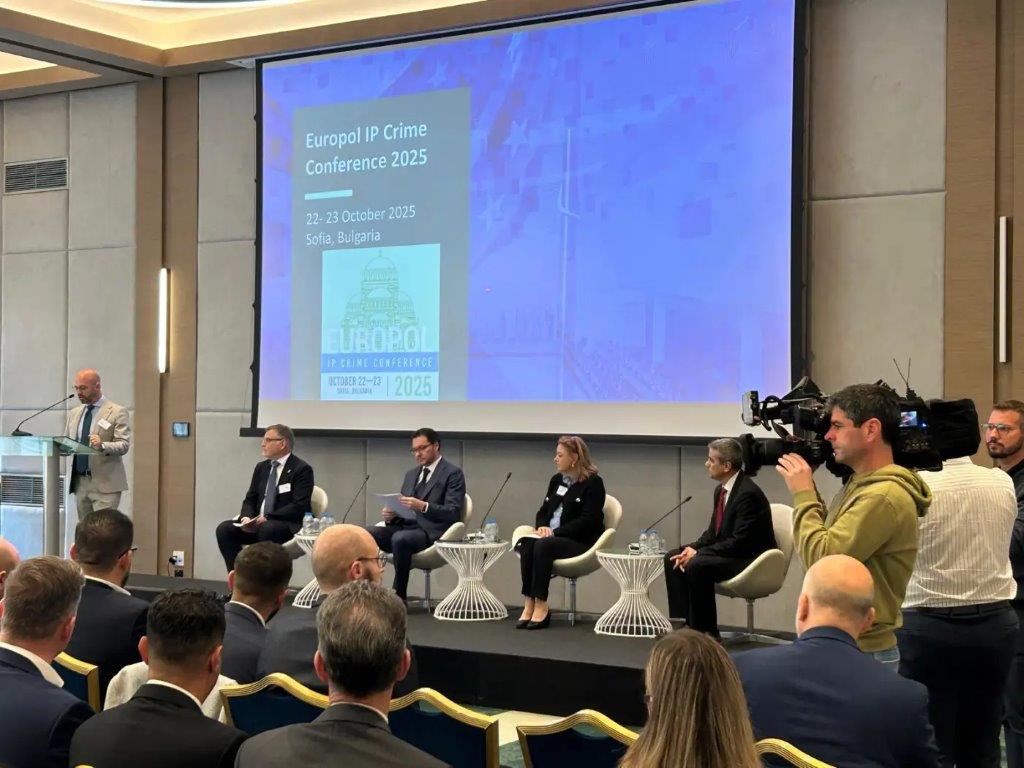Conference warns of online IP crime threat
October 24, 2025
By Colin Mann

A new wave of online crime is putting consumers, businesses, and the wider economy at risk – from fake medicines and forged wine to illegal streaming platforms, according to a conference, ‘From CLICK to CRIME: Investigating Intellectual Property Crime in the Digital Age’ held on October 22nd and 23rd 2025 in Sofia, Bulgaria. The increase in counterfeit goods and the criminal abuse of intellectual property affect our daily lives more than many realise, with consequences that go far beyond lost revenue.
Jointly organised by Europol, the European Union Intellectual Property Office (EUIPO) and Bulgaria’s General Directorate Combating Organised Crime (GDBOP), the event highlighted the vital importance of collaboration in tackling online crime. The participants reaffirmed the importance of strong collective efforts in tackling online-enabled intellectual property crime to protect consumers, safeguard creativity and uphold trust in the digital economy.
Consider a few key examples of the major threats posed by intellectual property crime:
- Illegal streaming and sharing platforms not only drain the cinema, publishing, musical and software industries but also expose viewers, especially children, to unregulated and potentially harmful content.
- Fake pharmaceuticals, supplements and illicit doping substances, promoted on social media and websites, are produced in clandestine labs without testing or quality control. Dangerous products, circulating in gyms and among amateur athletes, can cause severe or even fatal health effects.
- Counterfeit toys, perfumes, and cosmetics are also trafficked online and carry hidden dangers, trading low prices for high risks to health and safety.
Behind many of these schemes are well-structured organised criminal networks that view intellectual property crime not as a secondary activity, but as a lucrative business model. These criminal networks exploit global supply chains, digital platforms and shell companies to maximise their reach and profits. The vast revenues generated through counterfeiting and piracy sustain a broader criminal market, underscoring the importance of financial investigations and asset recovery in dismantling these networks and eliminating their economic incentives.
The conference brought together law enforcement agencies, policymakers, and industry experts to expose current threats and strengthen international cooperation in the fight against online intellectual property crime. Participants highlighted successful anti-piracy operations, analysed new criminal tactics, from evolving distribution methods and payment systems to the use of malware, and presented Europe’s latest tools, training, and operational actions to protect consumers and creativity in the digital age.
Criminal networks continue to exploit the high demand for low-cost goods, fuelled by the ongoing cost-of-living crisis and consumers’ limited awareness of the economic, health, and environmental risks posed by counterfeit products. According to the EU Serious and Organised Crime Threat Assessment 2025 (EU-SOCTA), published earlier in 2025, the rapid pace of digital transformation has shifted the trade in counterfeit goods online, leading to a sharp decline in the number of physical retail outlets. The report also highlights that social commerce, the integration of e-commerce with social media, has become a key channel through which counterfeiters reach and entice consumers.
To strengthen the fight against counterfeiting and piracy both online and offline, Europol and the European Union Intellectual Property Office (EUIPO) joined forces in 2016 to establish the Intellectual Property Crime Coordinated Coalition (IPC3). From CLICK to CRIME: Investigating Intellectual Property Crime in the Digital Age is the sixth conference co-organised by the two agencies, together with a national authority, aimed at enhancing knowledge and fostering a coordinated public-private sector response to intellectual property crime.
